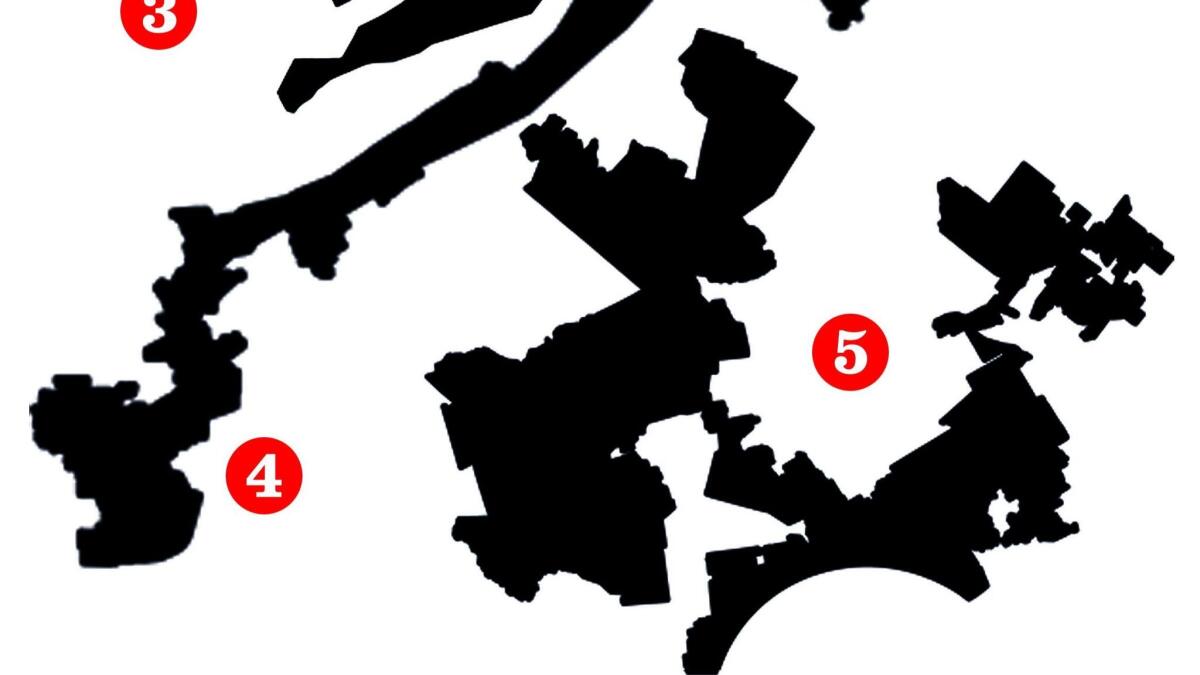Pennsylvania court orders new election map for its 18 House seats in a boost for Democrats

Reporting from Washington — The Pennsylvania Supreme Court on Monday struck down the state’s congressional map, which was drawn to give Republicans a 13-5 majority, a ruling that could shift two or three seats to Democrats this fall.
The decision is the third in a year to strike down a state election map as a partisan gerrymander. Unlike the others, however, it cannot be easily blocked or voided by an appeal in federal court because it’s based solely on the state constitution.
The state justices ordered the map to be redrawn for this year’s races, giving the state Legislature just a few weeks to develop a new map.
In a brief unsigned opinion, the high court said the 2011 election map “clearly, plainly and palpably” violates the Pennsylvania Constitution , and “its further use in elections for Pennsylvania seats in the U.S. House of Representatives … is hereby enjoined.” The justices in the majority said they would issue a more complete opinion spelling out the reasons for their decision.
Election law experts said the ruling could have an impact on this year’s midterm election and the battle for control of the House.
“This is a huge decision. It means the state’s map will be redrawn, and we could see two or three additional Democratic seats,” said Michael Li, a redistricting expert with the Brennan Center for Justice in New York. “It also opens a second front in the fight against partisan gerrymanders. Many state constitutions have stronger provisions for fair elections than the federal constitution.”
Democrats would have to capture 24 more House seats in November to take control. In several states, including Pennsylvania, they face district maps designed by Republican lawmakers that aim to ensure the GOP will win most of the seats even if Democrats win most of the state’s votes.
Although both parties have engaged in partisan gerrymanders over the years, Republicans had many more opportunities to do so when lines were last drawn, after the 2010 census, because they controlled a majority of state legislatures and governorships at the time.
Two weeks ago, federal judges struck down North Carolina’s congressional map, noting Republican leaders in that state openly admitted they had drawn the district map to try to guarantee sending 10 Republicans and three Democrats to the House — a goal they achieved.
The U.S. Supreme Court intervened last week and put that ruling on hold. The justices are still weighing a case from Wisconsin, in which federal judges ruled the GOP drew an election map to give its candidates a supermajority in the state Assembly even when Democrats won a narrow majority of the state’s votes.
The high court will soon hear a case from Maryland where Democrats shifted tens of thousands of voters in a successful effort to defeat a veteran Republican.
The Pennsylvania court’s order gave the GOP-controlled General Assembly and Democratic Gov. Tom Wolf until Feb. 15 to agree on a new map. If they fail to agree, the judges would take charge of drawing a map for use in the May 15 primary election. When the state’s current map was drawn, a Republican was governor, giving the party full control over the process.
Leaders of Common Cause and the League of Women Voters, who brought the suit in Pennsylvania, applauded the ruling as a victory for “voters choosing politicians rather than politicians choosing voters.”
“We hope that in drawing this map, that legislators will utilize the map drawn by experts as a blueprint to restore the vote to hundreds of thousands of Pennsylvanians who were essentially disenfranchised by the outrageous and unconstitutional gerrymander,” said Micah C.T. Sims, executive director of Common Cause Pennsylvania.
Major questions before the Supreme Court this year »
On Twitter: DavidGSavage
More to Read
Get the L.A. Times Politics newsletter
Deeply reported insights into legislation, politics and policy from Sacramento, Washington and beyond. In your inbox three times per week.
You may occasionally receive promotional content from the Los Angeles Times.











